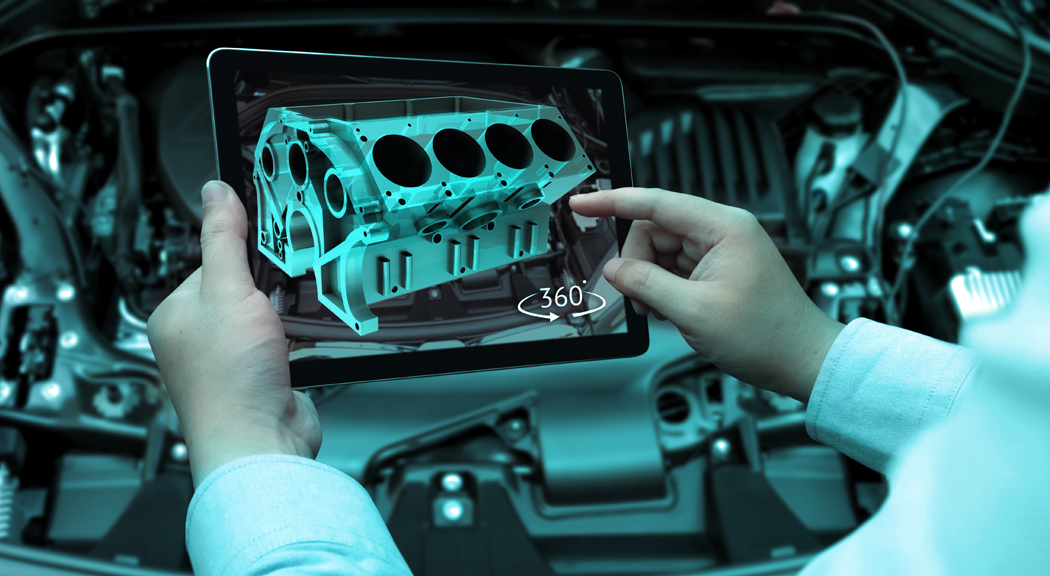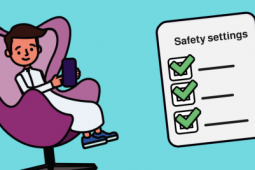Do I know how the devices around me are connected?
Augmented and Virtual Reality: Possibilities and Risks

According to Valuates Reports, by 2025, it is expected that the market size of Virtual Reality (VR) and Augmented Reality (AR) hits 571.42 billion – equivalent to 50 times the growth of its market value in the year 2017.
Following grand technological waves such as the advent of the Internet and the takeover of social media, another technological revolution is on its way to us carrying a lot of possibilities, opportunities, and lifestyle changes, but not without some risks too.
In brief definition, VR simulates an entire immersive 3D world while AR experiences are about adding new layers of digital information to what already exists in our real environment. Together, VR & AR are known as extended reality (XR).
What are we doing today with VR & AR?
Springing around the 1950s, extended technology witnessed different phases of improvement until our present day, that its potential is currently unfolding more and more across different sectors.
- In gaming: XR has almost become popular culture. It has witnessed big success, and people who enjoy games like Pokémon Go and Eve: Valkyrie can easily relate to that.
- In sports: Xtrematic technology company released a set of VR attractions that allow people to experience extreme sports and all the breathtaking sensations brought by horse riding, roller coasters, skiing, desert driving, and other thrilling adventures.
- In art: VR artist Anna Zhilyaeva runs highly successful performance all around the world dazzling audiences with her paintings and bringing 3D drawings to life.
- In the wider realm of entertainment: VR is now offering people to engage with exhibits, concerts, fantastical theme parks, museums, and galleries, no matter where they are. The British Museum is one example where VR technology was used to immerse people in a digital experience of the place.
- In different manufacturing industries: XR has proved a great cost-efficient tool, for technical teams are now able to visualize their product, experiment with its pros and cons, and further develop it before execution.
- In business: marketing experts have found big potential in XR, for it directly targets consumers’ attraction to new experiences. They are now able to provide their users with a virtual hands-on experience of products and services in a way that increases their sales figures.
- In military and aviation applications: XR is providing great safe and cost-efficient opportunities for staff training.
- In healthcare: the opportunities are also vast, and VR is already being adopted to treat a variety of medical conditions such as phobias and anxiety disorders. It is promised to help doctors analyze cell structures beyond current technologies and hence enable them to develop their research on disease and possibly discover treatments to chronic and lethal sicknesses.
The list of examples goes on to cover education, media, retail, and a lot more fields. However, let’s step back to check the drawbacks of such a breakthrough.
What are the risks of using VR & AR?
- Eye-tracking: Just like Face ID has aroused a lot of security alarms, eye tracking isn’t less of a serious matter. Concerns are that the eyes are windows to the soul, and this might allow advertisers to understand your subconscious better through VR, where they alter their messages accordingly to influence your purchasing behaviours.
- Privacy Issues: Eye tracking can also be registered as biometric data, and here’s another invasion of privacy besides what the following study has shown: researchers were able to identify users at 90% accuracy just by collecting their data at 95-time points during their XR experience.
- Minimal Content Control: Under the effect of XR headsets, users have little choice or control over the content they consume, and this makes them vulnerable to experience violence or obscenity in unhealthy or addictive doses. Such uncontrolled programming can further lead to sway people with extreme political views or encourage acts like terrorism.
- Distorted Realities: Now that the sensors installed within your headsets are able to record a variety of facial and body movements, it’s not unexpected that XR designers can create fake replicas of you or certain people that can influence you, such as celebrities. The lack of authenticity, in this case, can lead to a variety of misuses against the security of XR consumers, including harm to their reputation.
- Anxiety and Stress: Experiencing highly immersive experiences at such an accessible rate can increase users’ stress levels and induce anxiety especially from experiencing thrilling situations. As for the radiation they get exposed to, it can disrupt their sleep patterns and lead to mood swings.
How to benefit from XR while avoiding its cybersecurity risks?
Besides the solutions to be potentially provided by VR & AR privacy policy professionals, we are recommended, as users, to take the below precautions:
- Be careful about the information you disclose: For example, you can create a separate email address for logging in without sharing your credentials with any friends or users you don’t trust. Also, don’t provide any payment information unless you are actually going to make a purchase.
- Scan privacy policies before you opt-in for them: Although these are usually very lengthy and detailed information, you are required to skim through them especially the sections related to sharing your data with third parties and the kind of data being collected.
- Take general cybersecurity measures: Make sure you are using a virtual private network (VPN) in order to hide sensitive information like your identity and IP address. Also, be careful what websites you visit and what links you click to make sure all is safe and malware-free.
VR & AR technologies have already made great leaps into different aspects of our life. Still, research and projections expect an expanded progression, especially with the penetration of smart and electronic devices as well as the growth in internet and 5G technology. So keep yourself updated on the latest news and trends, for your next best XR experience!
@2x.png)






















